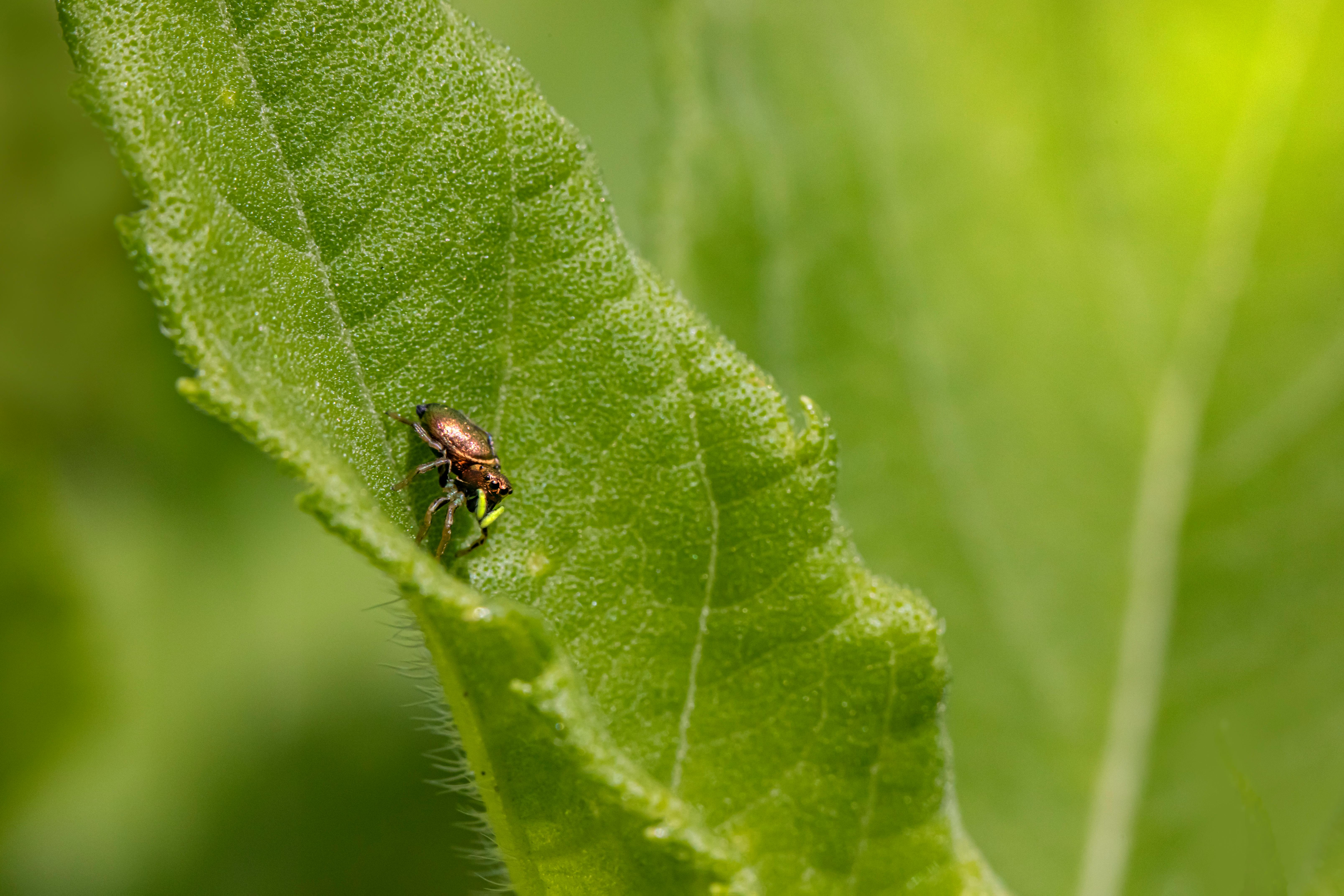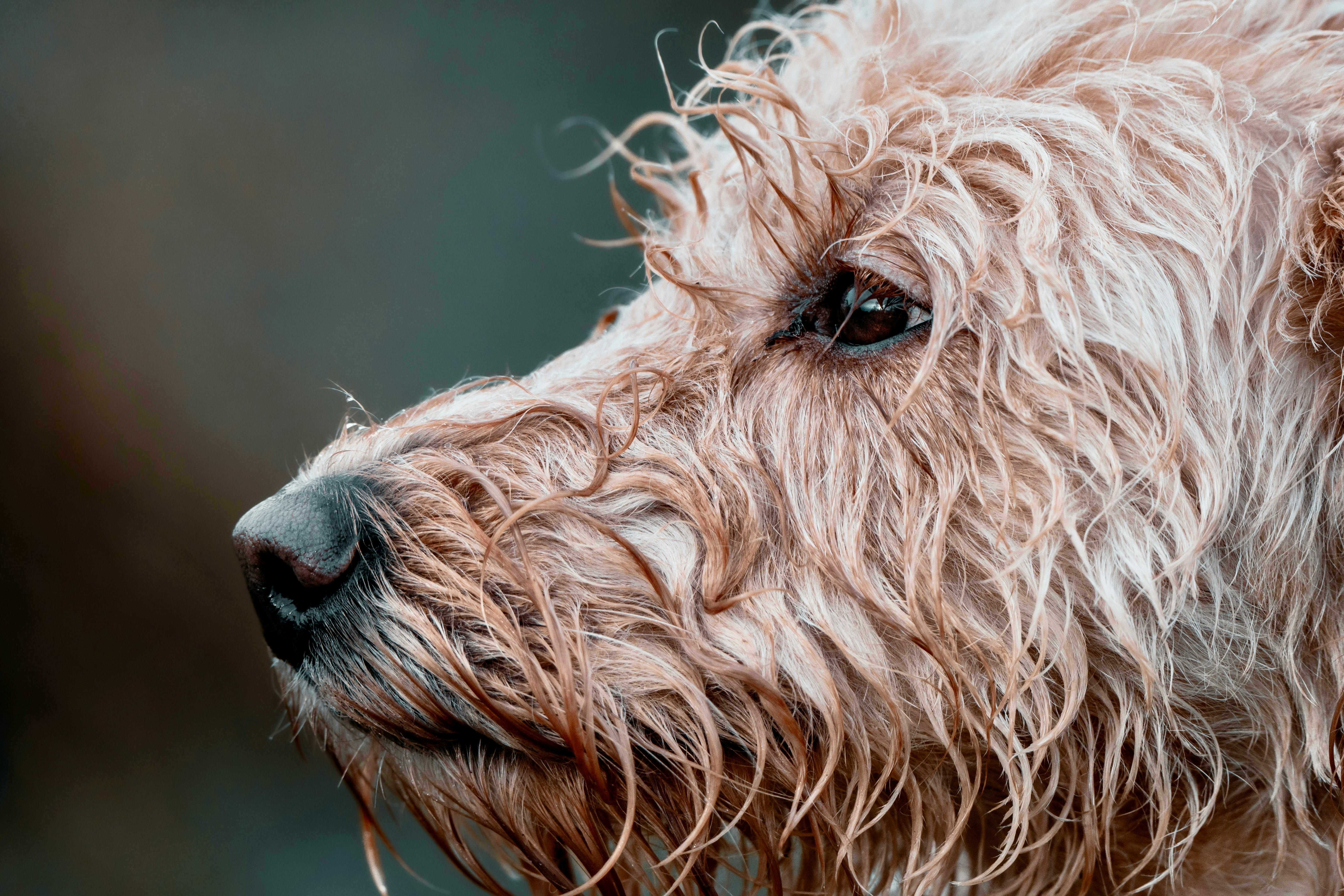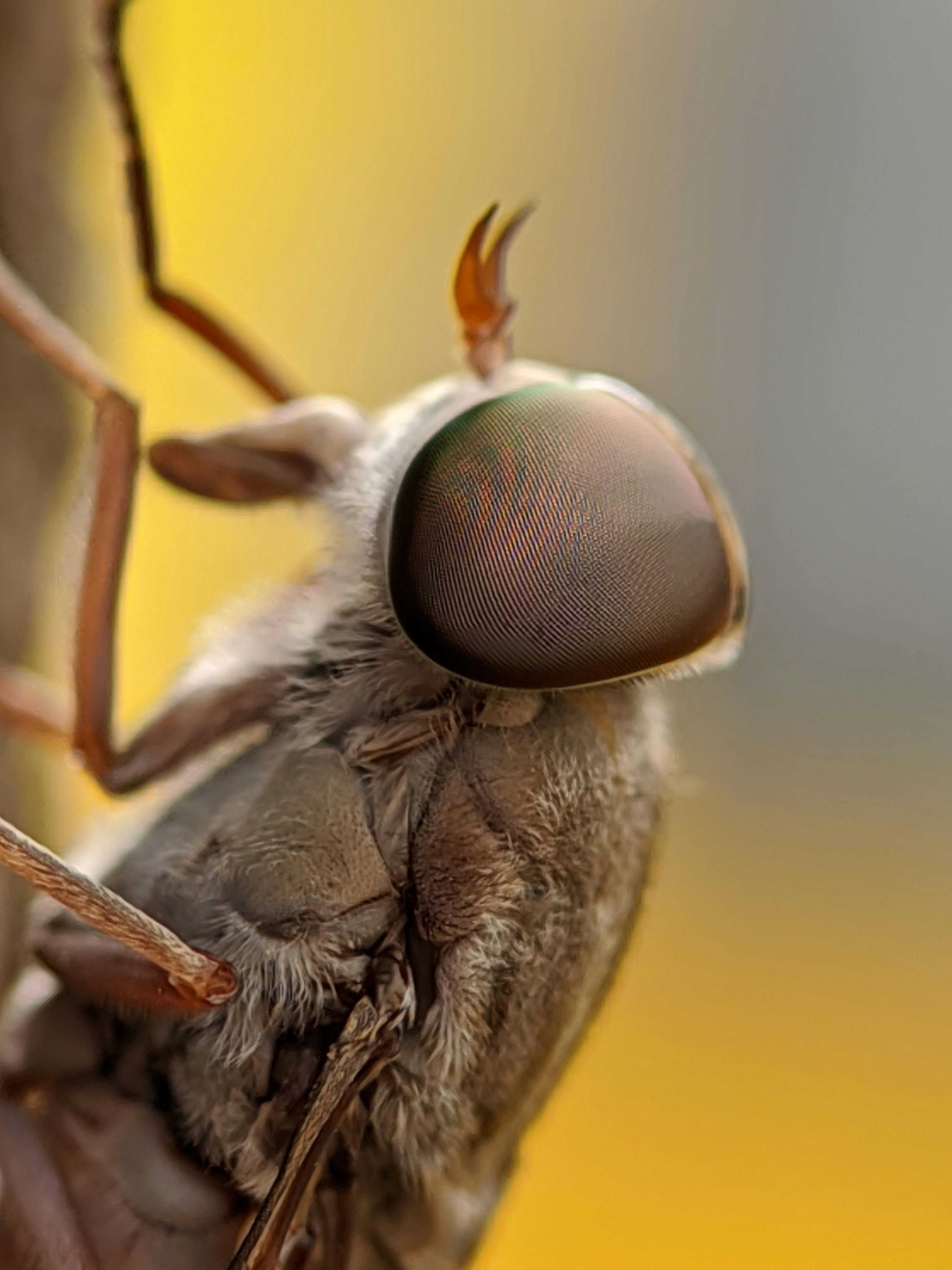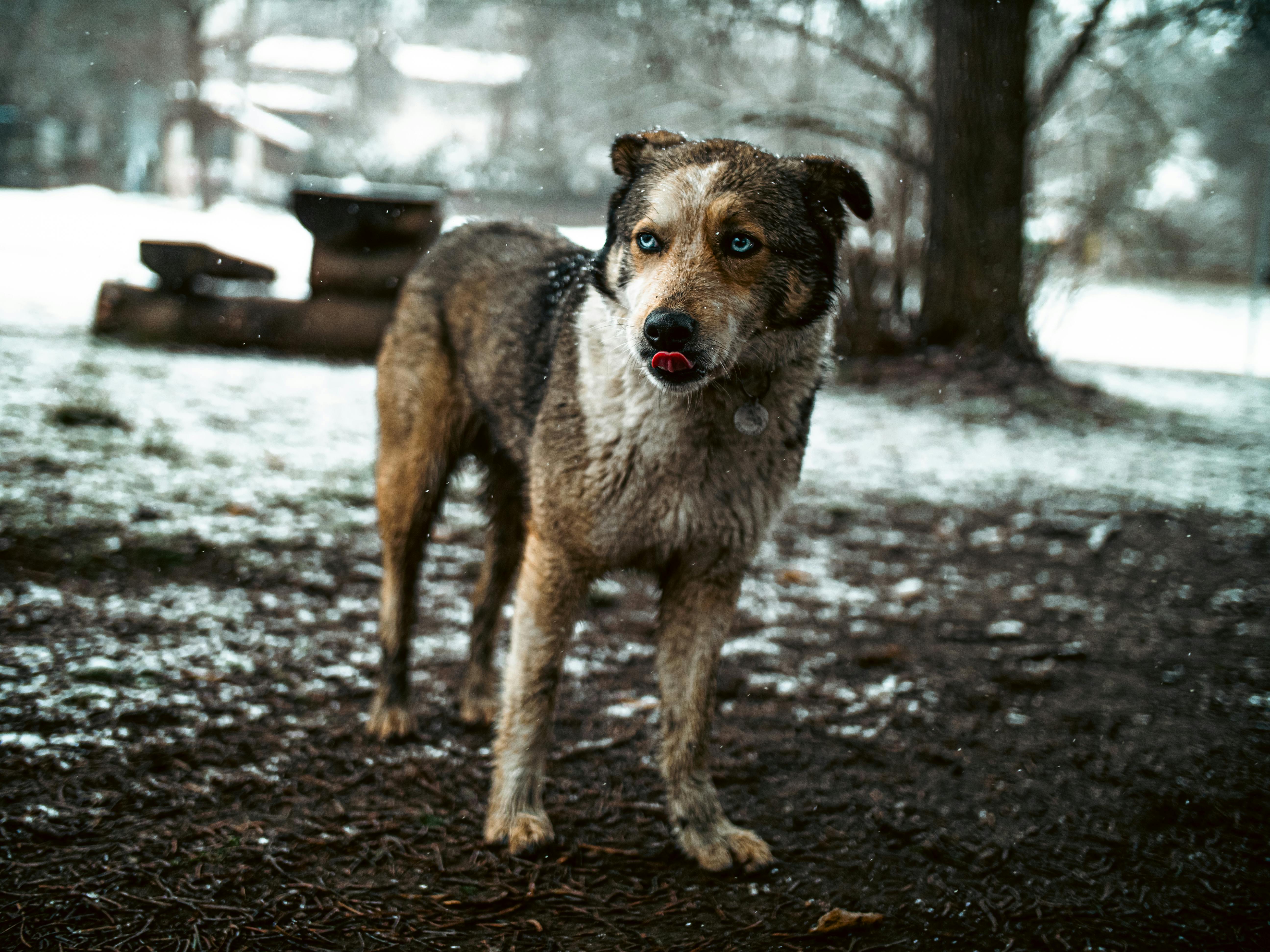Have you ever wondered, why do dogs have wet noses? This intriguing question has baffled dog lovers and pet owners alike for centuries. A dog’s nose is more than just an adorable feature; it plays a crucial role in their health and communication. But what makes it so wet? In this article, we will explore the fascinating science behind those wet noses and uncover the reasons why they are important for your furry friend. Is it just for smell? Or does a wet nose indicate something more about your dog’s health? You might be surprised to learn that a moist nose helps dogs to absorb scent molecules, enhance their sense of smell, and even regulate body temperature! As we delve deeper into the topic, we’ll also discuss common myths and facts surrounding this peculiar trait. So, if you’re curious about the significance of your dog’s nose, keep reading to discover the secrets behind this unique canine characteristic. Get ready to be amazed by the science of dog noses and understand why they are a key element of your dog’s overall well-being!
Understanding the Science: Why Do Dogs Have Wet Noses? The Biological Benefits Explained

Dogs, man’s best friend, have many fascinating traits. One of these traits is their wet noses. Ever wondered, “Why do dogs have wet noses?” Well, it turns out there’s more to this seemingly simple question than meets the eye. Understanding the science behind why dogs’ noses are moist can give us insight into their health, communication methods, and even their evolutionary history.
The Biological Benefits of Wet Noses
Dogs’ noses are wet for a reason, and it’s not just for show. The moisture on a dog’s nose serves several important biological functions. Here are the main benefits:
- Enhanced Smell: A dog’s sense of smell is roughly 10,000 to 100,000 times more sensitive than that of humans. The wetness on their noses helps to capture scent particles from the air, which enhances their ability to smell. When the nose is moist, it can absorb these particles better.
- Thermoregulation: Dogs can’t sweat like humans. Instead, they use their noses to help regulate body temperature. The moisture evaporating from the nose can cool them down, which is especially useful on hot days.
- Health Indicator: A dog’s nose can be a health barometer. While a warm or dry nose might not always mean something is wrong, significant changes can signify illness. A consistently dry or cracked nose could indicate dehydration or fever.
The Evolutionary Perspective
Dogs evolved from wolves thousands of years ago. Their wet noses might have been a trait that helped early canines survive in the wild. Here’s how:
- Hunting Efficiency: Wet noses would have made early dogs better hunters. The ability to smell prey from a distance would’ve been crucial for survival.
- Pack Communication: Dogs use their noses to gather information about their environment, including the scents left by other animals. A wet nose can pick up pheromones, which are chemicals used for communication among dogs.
Fun Facts About Dogs’ Noses
- Unique Patterns: Just like human fingerprints, no two dogs have the same nose print. Each dog’s nose has a unique pattern of ridges and creases.
- Color Variation: Not all dogs have black noses. Some breeds, like the Dalmatian, can have spotted noses, while others may have pink noses.
- Nasal Vomeronasal Organ: Dogs possess a special organ called the vomeronasal organ, which helps them detect pheromones. This organ is located in the nasal cavity and is vital for social interactions among dogs.
Common Misconceptions
There are several myths regarding dogs’ noses that are important to clarify:
- Always Cold and Wet: People often think a dog’s nose should always be cold and wet. However, temperature and moisture levels can vary throughout the day.
- Indicator of Illness: Many believe that a warm nose indicates a sick dog, but that’s not necessarily true. A dog’s nose can be warm for various reasons, including the weather or activity levels.
How to Care for Your Dog’s Nose
Maintaining your dog’s nose health is important. Here’s what you can do:
- Hydration: Always ensure your dog has access to fresh water. Proper hydration can help keep their nose moist.
- Moisturizing Cream: If your dog’s nose appears dry or cracked, consider using a pet-safe moisturizer. Products designed for dogs are available in pet stores.
- Regular Vet Visits: Keep up with regular vet appointments to monitor your dog’s overall health, including their nose.
Comparison: Dogs vs. Other Animals
Dogs aren’t the only animals with wet noses. Here’s a quick comparison of wet noses in various animals:
| Animal | Nose Type | Purpose |
|---|---|---|
| Dogs | Wet and cold | Enhanced smell, thermoregulation |
| Cats | Slightly moist | Sensory exploration |
| Pigs | Wet and warm | Ground foraging, scent detection |
| Rhinoceroses | Moist and thick | Foraging, social interaction |
Understanding the reasons behind why dogs have wet noses can enrich your appreciation for these furry companions. It’s not just a quirk; it’s a feature with important biological significance that aids in their survival and health. Next time you pet your dog and feel that cool, moist nose, remember the science behind it!
The Surprising Reasons Behind Your Dog’s Moist Nose: What Every Pet Owner Should Know

When you pet your dog, and you notice that their nose is surprisingly moist, you might wonder why. It’s a curious feature of our furry friends, and the reasons behind it can be both fascinating and enlightening. Many pet owners ponder, “Why do dogs have wet noses?” It’s not just a random trait. In fact, there are some science stuff and evolutionary reasons that contribute to this common characteristic among dogs.
The Science Behind Wet Noses
Dogs have wet noses for a variety of reasons that relates to their biology and health. Here are some of the main reasons:
Temperature Regulation: Dogs cannot sweat like humans do. Their main method of cooling down is through panting, but having a moist nose helps too. The moisture evaporates and helps to cool their body temperature.
Enhanced Sense of Smell: A wet nose helps to capture scent particles. When a dog’s nose is moist, it can absorb more scents, which enhances their incredible sense of smell. This is crucial for many dogs who work as service animals or in search and rescue operations.
Health Indicator: A wet nose is often a sign of a healthy dog. If your pup’s nose is dry, it might not be an immediate cause for alarm, but it could indicate dehydration or illness. So, pay attention to changes in your dog’s nose!
Why are Dog Noses Moist?
You may wonder, what exactly makes a dog’s nose moist? Here’s a breakdown:
Mucous Membranes: Dogs have specialized mucous membranes that keep their noses moist. These membranes produce a thin layer of mucus, which helps in capturing scents and keeping the nose cool.
Saliva: Dogs often lick their noses, which adds moisture. This behavior is instinctual and can also help them to gather more scent information from their environment.
Environmental Factors: Factors like humidity and temperature can also affect how moist a dog’s nose is. For instance, in hotter climates, a dog’s nose might be wetter due to increased licking and environmental moisture.
Historical Context of Dog Noses
The wet nose isn’t just a random quirk. It has roots in the evolution of dogs. Historically, dogs that had moist noses were better at hunting and gathering food. The ability to track scents was crucial for survival, and thus this trait became prevalent through natural selection. Over time, as dogs evolved alongside humans, their moist noses remained a key part of their anatomy.
Fun Facts About Dog Noses
Did you know that dog noses are as unique as fingerprints? Here are some fun facts:
Nose Prints: Each dog has a unique nose print, which can be used to identify them, similar to human fingerprints.
Dogs Can Smell Diseases: Some dogs are trained to sniff out diseases like cancer and diabetes. Their sensitive noses can detect changes in human scent caused by illness.
Color Variations: The color of a dog’s nose can vary widely, from black to pink to liver-colored. This is usually determined by genetics and has no impact on their health.
Common Myths About Wet Noses
There’s plenty of misinformation out there. Let’s debunk some common myths:
Myth: A dry nose means your dog is sick.
Fact: While a dry nose can indicate dehydration or illness, it’s not a definitive sign. Dogs can have dry noses for many reasons, including weather changes.Myth: All dogs have wet noses all the time.
Fact: Dogs’ noses can be dry at times, especially when they are sleeping or in a warm environment.Myth: A wet nose means the dog is happy.
Fact: While a wet nose can indicate a healthy dog, it doesn’t necessarily mean they are happy. Dogs express emotions in many ways.
Maintaining Your Dog’s Nose Health
Here are some tips to keep your dog’s nose healthy:
Hydration: Always make sure your dog has access to clean water. Dehydration can lead to a dry nose.
Regular Vet Checkups: Regular veterinary visits can help monitor your dog’s overall health, including their nose.
Avoid Irritants: Keep your dog away from harsh chemicals or environments that might irritate their nose.
Understanding why do dogs have wet noses can help pet owners care for their furry friends better. It’s a part of their biology that plays a significant role in their health and senses. Embrace that moist nose, and remember, it’s just one of the many things that make dogs such incredible companions.
Is a Wet Nose a Sign of Health? Exploring the Myths and Facts About Dog Nose Moisture

Is a Wet Nose a Sign of Health? Exploring the Myths and Facts About Dog Nose Moisture, Why Do Dogs Have Wet Noses? Discover the Science Behind It!
When you see a dog with a wet nose, you might think it’s a sign of good health. But is this true? Many people believe a moist nose is an indicator that a dog is feeling fine, while others say it doesn’t mean much at all. Let’s explore the science behind why dogs have wet noses, the myths surrounding this idea, and what you should really look for to assess your pup’s health.
Why Do Dogs Have Wet Noses?
Dogs have wet noses for a variety of reasons. The first and foremost is that it helps them to smell better. Dogs have a highly developed sense of smell, and a moist nose helps to capture scent particles from the air. Here are some interesting facts about why dogs have wet noses:
- Cooling Mechanism: Dogs sweat very little through their skin. Their noses help to regulate body temperature when they are feeling hot.
- Better Scent Detection: The moisture in a dog’s nose helps to dissolve scent particles, making it easier for them to detect smells. This is essential for their hunting and exploring behavior.
- Health Indicator: A wet nose can sometimes indicate that a dog is feeling well. But it’s not a foolproof measure.
Common Myths About Wet Noses
There are several myths surrounding wet noses in dogs. Here are some of the common beliefs that might not be entirely accurate:
A Wet Nose Equals Good Health: While a wet nose can indicate that a dog is healthy, it’s not the only factor to consider. A dry nose doesn’t necessarily mean a dog is sick.
All Dogs Have Wet Noses: Some breeds have drier noses than others. For instance, brachycephalic breeds like Bulldogs might have less moisture on their noses compared to others.
Nose Temperature Indicates Health: Many people think a cold nose means a dog is healthy, while a warm nose indicates illness. However, this varies widely. Dogs can have warm noses and be perfectly healthy.
Comparing Wet and Dry Noses: What’s Normal?
It’s important to understand what is considered a normal nose condition for dogs. Here’s a quick comparison:
| Condition | Wet Nose | Dry Nose |
|---|---|---|
| Health Indicator | Often healthy | Not necessarily unhealthy |
| Temperature | Usually cool | Can be warm or cool |
| Breed Variability | Common in most breeds | Some breeds naturally have dry noses |
| Other Symptoms | No other symptoms | May indicate dehydration or illness |
Factors That Affect Nose Moisture
Several factors can influence the moisture level of a dog’s nose. Here are a few things to keep in mind:
- Weather Conditions: Hot, dry weather can lead to a drier nose. In contrast, humidity can increase moisture levels.
- Activity Level: After exercise, a dog’s nose may become drier as they pant and lose moisture.
- Health Issues: Certain health problems can lead to changes in nose moisture. For example, allergies or dehydration might cause a dog’s nose to dry out.
What Should You Look For?
To assess your dog’s health, don’t just rely on the moisture of their nose. Here are some practical signs of a healthy dog:
- Energy Levels: Is your dog active and playful?
- Appetite: A healthy dog usually has a good appetite.
- Behavior: Look for signs of well-being like wagging tails and playful behavior.
- Physical Exam: Regular vet check-ups can help catch any underlying issues.
If you’re ever uncertain about your dog’s health, it’s always best to consult with a veterinarian. They can provide a comprehensive check-up beyond just looking at the nose.
Understanding whether a wet nose is a sign of health or not can be confusing. The facts show that while a wet nose can be a good sign, it’s not the only indicator of a dog’s condition. Pay attention to your dog’s overall behavior and health, and always seek professional advice when in doubt. Your furry friend relies on you for their well-being, so staying informed is key.
The Role of a Dog’s Wet Nose in Scent Detection: How It Enhances Their Super Sniffing Abilities

Dogs are known for their incredible sense of smell, but one of the less talked about factors that contribute to this amazing ability is their wet noses. You might wonder, why do dogs have wet noses? Well, the answer is quite fascinating and involves a mix of biology and evolution. The moisture on a dog’s nose isn’t just for show; it plays a crucial role in enhancing their scent detection abilities.
The Science Behind a Dog’s Wet Nose
First off, a dog’s nose is covered with a thin layer of mucus. This mucus serves a couple of purposes. One, it helps to capture scent particles from the air. When a dog sniffs, the moisture in the mucus traps these particles, allowing the olfactory receptors in their nose to detect them more effectively. It’s like a sponge soaking up scents!
Secondly, the wetness helps to cool the dog down. Dogs don’t sweat like humans do; instead, they release heat through their noses and paw pads. So, a wet nose is also a sign of a healthy dog, as it indicates proper hydration and function.
How Dogs Use Their Sense of Smell
Dogs have approximately 220 million olfactory receptors in their noses, compared to humans who have about 5 million. This massive difference means dogs can detect odors at incredibly low concentrations. Some studies even show that dogs can identify certain scents in parts per trillion!
Their sense of smell is used for various purposes:
- Tracking: Dogs are often used in search and rescue missions to find missing persons.
- Detection: Police and military dogs can sniff out drugs, explosives, and even certain medical conditions like diabetes or cancer.
- Hunting: Many breeds are specifically trained for tracking game.
The way a dog’s brain is wired also plays a role. The area of their brain responsible for analyzing smells is 40 times larger than that of humans. This means dogs can not only detect a wider range of smells, but they can also differentiate between them much better than we can.
Why Is a Wet Nose Important?
Now, let’s break down why a wet nose is so crucial for a dog’s super sniffing abilities. Here are some key points:
- Enhanced Scent Detection: As mentioned, moisture attracts scent particles, making it easier for dogs to pick up on smells.
- Temperature Regulation: A wet nose helps to cool a dog down, allowing them to remain active and alert while sniffing out scents.
- Health Indicator: A healthy, wet nose is often a sign of a well-hydrated and healthy dog. Conversely, a dry or cracked nose can indicate dehydration or health issues.
Fun Facts About Dog Noses
- Unique Patterns: Just like human fingerprints, every dog has a unique nose print. This could theoretically be used to identify them!
- Color Variations: The color of a dog’s nose can vary greatly, from black to pink, and this can be influenced by genetics and environment.
- Dogs Can Smell Emotions: It’s been shown that dogs can detect changes in human body odor that occur with different emotional states.
The Evolution of Dogs’ Sense of Smell
Dogs evolved from wolves, who were also skilled hunters. Over time, domestication and selective breeding have enhanced their abilities. Breeds like Bloodhounds were specifically bred for their incredible sense of smell, making them perfect for tracking.
The reason behind this ability is fairly straightforward: those dogs that could sniff out food, predators, or mates had a better chance of survival and passing on their traits.
Practical Examples of Dogs Using Their Noses
- Search and Rescue: After natural disasters, trained dogs can locate survivors who might be trapped under rubble.
- Detecting Diseases: There are instances where dogs have been able to detect certain types of cancer in patients through scent alone.
- Therapy and Emotional Support: Dogs can sense emotional changes in humans, providing comfort when their owners feel down.
The role of a dog’s wet nose in enhancing their scent detection is an extraordinary aspect of canine biology. Understanding the science behind why do dogs have wet noses can deepen our appreciation for these loyal companions. There’s so much more to dogs than meets the eye, and their noses are just one of the many features that make them special. So, next time you see a pup with a wet nose, remember that it’s not just cute; it’s a tool that helps them navigate their world in unique and amazing ways.
Why Do Dogs’ Noses Get Wet? Discover the Environmental Factors That Contribute to Nose Moisture

Have you ever wondered why do dogs have wet noses? Many pet owners notice that their furry friends’ noses are often moist, and while it might seem like just another quirky trait, there’s actually science and environmental factors behind it. Understanding this can help you care better for your canine companion and may even spark some interesting conversations among dog lovers. So let’s dive in and explore the reasons dogs’ noses get wet!
The Biology of Dog Noses
Dog noses are not just cute; they are essential tools for their survival. A dog’s nose is made up of a thin layer of skin that contains a lot of sweat glands. This is important because these glands help to keep their noses moist. Here’s some interesting facts about dog noses:
- Dog noses are covered in a unique pattern of ridges and bumps, similar to human fingerprints.
- The moisture on a dog’s nose helps enhance their sense of smell. A wet nose can capture scent particles more effectively.
- The temperature of a dog’s nose can change, and it’s believed that a cooler nose might indicate a healthy dog.
Why Do Dogs’ Noses Get Wet?
There are multiple reasons why your furry friend’s nose might be wet. Here are some of the most common environmental factors that contribute to nose moisture:
Humidity Levels: Dogs’ noses tend to be wetter in humid environments. High humidity helps keep their noses moist as the moisture in the air can get absorbed by the skin on their noses.
Temperature Fluctuations: When the weather is warm, dogs often pant to cool down, and this can lead to a damp nose as the moisture evaporates from their mouths and onto their noses.
Health Reasons: A wet nose is generally a sign of a healthy dog, but if your dog’s nose is excessively wet or dry, it may indicate a health issue. For instance, dehydration may cause a dry nose, while allergies or infections could lead to extra moisture.
Play and Activities: Dogs are active creatures! When they are out playing, they often stick their noses into grass, dirt, or water, which can lead to a wet nose.
Nasal Discharge: Sometimes, a wet nose can be due to a clear nasal discharge, which can occur from various reasons like allergies or minor infections.
The Science Behind Wet Noses
So, why do dogs have wet noses? It’s not just a random trait. The moisture plays a critical role in their olfactory abilities. Here’s how it works:
Enhanced Smell: Dogs have an extraordinary sense of smell, which is estimated to be 10,000 to 100,000 times better than humans. The moisture on their noses helps to capture odor molecules from the air.
Cooling Mechanism: Dogs do not sweat like humans. Instead, they rely on panting and the moisture on their noses to cool themselves down. This is particularly important during hot weather or after vigorous exercise.
Communication: Dogs also use their noses to communicate. A wet nose can indicate excitement or curiosity. When dogs greet each other, they often sniff noses, which helps them gather information about one another.
Fun Facts About Dog Noses
- Dogs possess up to 300 million smell receptors in their noses, compared to about 6 million in humans.
- The average dog’s sense of smell can detect scents at incredibly low concentrations, as low as one part per trillion.
- The wetness of a dog’s nose can change throughout the day based on their activity level, health, and environment.
Comparing Dog Noses
Here’s a quick comparison table to help illustrate the unique features of dog noses versus human noses:
| Feature | Dog Noses | Human Noses |
|---|---|---|
| Moisture Level | Often wet | Usually dry |
| Smell Receptors | ~300 million | ~6 million |
| Temperature | Varies with health | Stable |
| Function | Smell, cooling | Smell, breathing |
In summary, the moisture on your dog’s nose serves various purposes, including enhancing their sense of smell and regulating their body temperature. Factors like humidity, temperature, and physical activity all contribute to how wet their noses can get.
So next time you see your dog’s wet nose, you’ll know it’s not just adorable; it’s a sign of their incredible biology at work! Understanding the reasons behind your pet’s wet nose can help you ensure they stay healthy and happy.
5 Fascinating Facts About Dogs and Their Wet Noses: What Science Reveals

Dogs have captivated humans for thousands of years, and their unique features never cease to amaze. One of the most intriguing characteristics of dogs is their wet noses. But have you ever stopped to wonder, why do dogs have wet noses? This article dives into five fascinating facts about dogs and their wet noses, revealing the science behind it and what it means for our furry companions.
1. The Science of Moisture
The primary reason why dogs have wet noses is due to their natural ability to regulate body temperature. Dogs don’t sweat like humans do; instead, they rely on their noses to help maintain a proper body temperature. The moisture on their noses evaporates and helps cool them down, sort of like how sweating works for us. This is particularly important for dogs, especially during warmer months when overheating can be a serious risk.
2. Enhanced Sense of Smell
Did you know that a dog’s sense of smell is estimated to be around 10,000 to 100,000 times more sensitive than that of humans? This wetness on their noses plays a crucial role in this incredible sense. The moisture helps to capture scent particles from the air. When the moisture evaporates, it enhances the dog’s olfactory receptors, making it easier for them to detect and identify different smells. So a wet nose is not just a feature, but a tool that enables dogs to interact better with their environment.
3. The Role of Nasal Mucus
Nasal mucus is important for dogs, just like it is for humans. The mucous membranes in a dog’s nose produce this moisture, which serves multiple purposes. Here are some key functions of nasal mucus:
- Traps particles: It traps dust and other particles that could irritate a dog’s respiratory system.
- Filter odors: It helps filter the odors that dogs inhale, allowing them to distinguish between various scents.
- Hydration: Maintains the hydration of the nasal tissues, which is crucial for their sense of smell.
It’s like having a built-in air filter that helps dogs breathe and smell better!
4. Health Indicators
A dog’s nose can also be an indicator of their health. A wet, cool nose is often a sign that a dog is in good health. However, if a dog’s nose becomes dry and warm, it could signal dehydration or illness. Here’s a quick guide to understanding what different nose conditions might mean:
- Wet and cool: Generally healthy.
- Dry and warm: Possible fever or dehydration.
- Cracked or rough: Potential allergies or skin conditions.
While a wet nose is typically a good sign, it’s always best to monitor your dog’s overall health and consult a veterinarian if you notice any concerning changes.
5. Evolutionary Adaptation
The wet nose is not just a random trait; it has evolutionary significance. Scientists believe that the wetness of a dog’s nose has developed over thousands of years as a means of survival. An enhanced sense of smell would have been beneficial for hunting and scavenging. Dogs that had wet noses may have been better at detecting food, predators, or other threats, leading to greater chances of survival and reproduction. This evolutionary advantage has helped shape the breeds we see today.
Fun Facts About Dogs and Their Noses
- Dogs have around 220 million olfactory receptors in their noses, whereas humans only have about 5 million.
- Each dog’s nose print is unique, similar to a human fingerprint. It can even be used for identification.
- Dogs can smell certain diseases, such as cancer or diabetes, due to their advanced olfactory abilities.
- The wetness of a dog’s nose can change throughout the day depending on their activities and environment.
Comparing Dog Noses to Human Noses
Here’s a quick comparison of dogs and humans regarding their noses:
| Feature | Dogs | Humans |
|---|---|---|
| Olfactory Receptors | 220 million | 5 million |
| Nose Wetness | Moist, helps with smell | Dry, primarily for breathing |
| Temperature Regulation | Evaporation cools body | Sweating cools body |
Understanding the science behind why do dogs have wet noses provides a glimpse into the fascinating world of canine biology. It’s amazing to consider how something as simple as a wet nose can have such profound implications for a dog’s health and survival. If you’re a dog owner, appreciating this feature can deepen your bond with your furry friend. After all, a wet nose is a sign of a happy and healthy pup!
Curious About Your Dog’s Nose? Here’s Why Wetness Matters for Their Well-Being

Curious About Your Dog’s Nose? Here’s Why Wetness Matters for Their Well-Being, Why Do Dogs Have Wet Noses? Discover the Science Behind It!
Dogs are such amazing creatures, aren’t they? One of the most interesting features of our canine companions is their noses. If you ever looked at your dog and wondered why their nose is wet, you’re not alone. It turns out that a dog’s nose plays a key role in their overall health and well-being. So, let’s dive into the science behind those moist noses and what it means for your furry friend.
The Science of Dog Noses
First off, a dog’s nose is not just for show. It’s packed with receptors and is highly sensitive. In fact, dogs have about 220 million scent receptors, compared to a human’s measly 5 million. This makes them amazing at sniffing out things, which is why they are often used in search and rescue missions, or even to detect diseases.
But why do dogs have wet noses? Well, when a dog’s nose is wet, it actually helps them smell better. The moisture on their nose collects scent particles in the air, which makes it easier for them to detect different smells. It’s like having an extra tool for their nose!
Why Wetness is Important
Wet noses are generally a sign of health in dogs. Here a few reasons why the wetness matters:
- Enhanced Scent Detection: As mentioned, moisture helps trap scent particles.
- Cooling Mechanism: Dogs don’t sweat like humans do. Instead, they cool off through their noses, and a wet nose helps regulate their body temperature.
- Signs of Health: A consistently wet nose usually indicates that your dog is healthy. If their nose becomes dry or cracked, it might be time for a vet visit to check for dehydration or other health issues.
Historical Context of Dog Noses
The evolutionary journey of dogs from wolves to the beloved pets we have today also plays a role in their noses. Historically, wolves relied heavily on their sense of smell for hunting and survival. This necessity has carried over to domestic dogs, making their noses not just a cute feature, but an essential part of their biology.
The moisture on their noses is believed to be a trait that has been honed over thousands of years. While some dog breeds might have slightly different nose characteristics, the general purpose remains the same: to help them survive and thrive.
Fun Facts About Dog Noses
- Dogs’ noses come in all shapes and sizes, depending on the breed. For example, Bloodhounds have some of the most powerful noses, making them excellent trackers.
- The texture of a dog’s nose can also vary. Some are smooth, while others are rough and bumpy.
- Just like fingerprints in humans, no two dog noses are exactly alike! Each has a unique pattern.
Comparing Dog Noses to Human Noses
If you think about it, a dog’s nose is like a human’s fingerprint in some ways. Here’s a simple comparison:
| Feature | Dog Nose | Human Nose |
|---|---|---|
| Scent Receptors | 220 million | 5 million |
| Moisture Function | Enhances smell | Limited role |
| Cooling Mechanism | Yes | No |
| Unique Patterns | Yes | No |
Practical Examples of Nose Health
Here are some practical signs to keep an eye on when it comes to your dog’s nose:
- Normal: Slightly moist and cool to the touch.
- Dry or Cracked: Could indicate dehydration or illness.
- Excessively Wet: Might be a sign of nasal discharge or allergies.
If you notice any abnormalities, it’s best to consult with your veterinarian. They can help determine if there’s an underlying issue that needs to be addressed.
So, next time you give your dog a pat on the head and admire that cute, wet nose, remember that it’s more than just an adorable feature. It’s an essential part of their biology and plays a crucial role in keeping them healthy. Understanding the science behind it can deepen the bond you have with your furry friend. Keep an eye on that nose, and you’ll be better equipped to ensure your dog stays happy and healthy!
How Seasonal Changes Affect Your Dog’s Nose Moisture: Tips for Pet Owners

Dog owners often wonder about their pets’ health and behavior, especially when it comes to those cute, wet noses. Have you noticed how your dog’s nose feels different depending on the season? It’s not just you, there’s actually a science behind it! Understanding why do dogs have wet noses and how seasonal changes affect nose moisture can help you take better care of your furry friend.
Why Do Dogs Have Wet Noses?
Dogs have wet noses for a few reasons, and it relates to their health and senses. Here’s a quick breakdown:
Temperature Regulation: Dogs don’t sweat like humans do. Their noses help them cool down. When a dog’s nose is wet, it can evaporate moisture, which aids in keeping their body temperature down.
Enhanced Smell: A moist nose helps capture scent particles better. This means dogs can smell things more effectively, which is crucial for their hunting instincts or just getting to know their surroundings.
Health Indicator: A wet nose is often seen as a sign of a healthy dog. However, changes in moisture can indicate health issues. A dry or cracked nose might suggest dehydration or illness.
Seasonal Changes and Their Effects
As the seasons change, so does the moisture level of your dog’s nose. Here’s how each season can affect it:
Spring: Allergies can be a problem. Pollen may cause irritation, leading to increased nose moisture. Dog noses may be runny due to allergies, so watch for signs of discomfort.
Summer: Hot weather can dry out your dog’s nose. If they’re outside a lot, make sure they have plenty of water and shade. Dry noses in summer can lead to cracking, which is painful for your pet.
Fall: Humidity tends to drop in the fall, leading to drier air. This can affect your dog’s nose moisture. Keep an eye on their hydration levels, as they might not drink as much when it’s cooler.
Winter: Cold weather can dry out your dog’s skin and nose. Indoor heating exacerbates the problem, so consider using a humidifier to maintain moisture levels in your home.
Tips for Pet Owners
Here are some practical tips to help maintain your dog’s nose moisture throughout the year:
Hydration: Always make sure your dog has access to fresh water. Dehydration can quickly lead to a dry nose, particularly in warmer months.
Humidity: In dry seasons, consider using a humidifier indoors. This can help keep your dog’s nose moist and comfortable.
Nose Balm: There are specially formulated balms available that can help treat and protect a dry or cracked nose. Look for natural ingredients that are safe for pets.
Regular Vet Checkups: Keep up with regular vet visits. They can check for any underlying issues if you notice persistent dryness or other changes in your dog’s nose.
Signs of Concern
While a wet nose is generally a good sign, it’s important to know when to seek veterinary advice. Look out for these signs:
- Excessively dry or cracked nose
- Nose discharge or unusual color changes
- A dramatic change in nose temperature (too hot or too cold)
- Signs of lethargy or lack of appetite
Fun Facts About Dogs’ Noses
Dogs have about 220 million scent receptors in their noses compared to humans’ 5 million. This gives them an extraordinary sense of smell!
The texture of a dog’s nose is unique, much like human fingerprints.
Some breeds, like Bloodhounds, are specifically bred for their incredible sense of smell and can track scents that are days old.
Understanding how seasonal changes affect your dog’s nose moisture can help you become a more attentive pet owner. Keeping your furry buddy healthy and comfortable is key. By following these tips and being observant of changes, you can ensure that your dog stays happy and healthy all year round. Remember, a wet nose is not just a cute feature; it’s an important aspect of your pet’s health and well-being!
The Connection Between a Dog’s Wet Nose and Their Behavior: What to Watch For

Every dog owner has probably noticed their furry friend’s wet nose at some point, and many wonder, why do dogs have wet noses? It’s not just a random quirk of nature. There’s a science behind it, and it often ties into their behavior and health. Understanding the connection can help dog owners make sense of their pet’s actions and well-being.
The Science of Wet Noses
A dog’s nose is wet for several reasons, but the primary reason is related to their sense of smell. Dogs have an incredible olfactory system, and a wet nose helps enhance their ability to detect scents. When a dog’s nose is moist, it can better capture scent particles in the air. This is due to the mucus on their nose, which helps absorb the smells, making it easier for the dog to analyze them.
- Increased Olfactory Sensitivity: A wet nose can pick up more scent particles than a dry one.
- Temperature Regulation: Dogs sweat through their noses, allowing them to cool down on hot days.
- Health Indicator: A consistently wet nose often indicates a healthy dog, while a dry nose can suggest dehydration or illness.
Historical Context of Wet Noses
Historically, dogs have evolved from wolves, and their noses have adapted over time. Wolves, like domestic dogs, rely heavily on their sense of smell for hunting and survival. A wet nose was likely advantageous for their hunting success. It is thought that this trait carried over into domesticated dogs, continuing to serve a purpose in their interaction with the world.
- Wolves: Depend on smell for tracking prey.
- Domestic Dogs: Use smell for communication and exploring their environment.
Behavioral Connections
The connection between a dog’s wet nose and their behavior is fascinating. When a dog’s nose is wet, it can indicate various emotional states or health conditions. Below are some behaviors to watch for:
- Excitement: A wet nose can be a sign of a happy and excited dog. When dogs are happy, they often pant, which can add moisture to their noses.
- Curiosity: If a dog is sniffing around and their nose is wet, they’re likely gathering information about their environment.
- Stress: A dry nose can sometimes indicate stress or anxiety. If a dog seems agitated and has a dry nose, it may be worth investigating the cause of their distress.
Common Misconceptions
Many people think that a wet nose means a dog is sick or unwell due to its moisture. This isn’t true. Here’s a quick list of common misconceptions:
Myth: A wet nose always indicates a healthy dog.
Fact: While a wet nose is often a sign of health, factors like temperature and activity level also play a role.
Myth: All dogs have the same moisture level in their noses.
Fact: Just as humans have different skin types, dogs can have varying moisture levels based on breed and environment.
What to Watch For
Dog owners should pay attention to changes in their dog’s nose moisture. Here are some signs that might indicate a problem:
- Dry Nose: If a dog’s nose is dry for an extended period, it could signal dehydration or illness.
- Cracked Nose: A cracked or chapped nose might require veterinary attention.
- Excessive Moisture: If a dog has an unusually wet nose accompanied by other symptoms like lethargy or loss of appetite, a vet visit might be necessary.
Fun Facts About Dogs’ Noses
- Dogs’ noses have unique patterns, much like human fingerprints.
- The average dog has about 220 million scent receptors in their noses.
- Dogs can smell up to 100,000 times better than humans.
Understanding the connection between a dog’s wet nose and their behavior can deepen the bond you share with your furry friend. It’s not just a quirky trait; it plays a vital role in their health and interactions with the world. Always monitor your dog’s nose moisture and overall behavior to ensure they’re healthy and happy. If you notice significant changes, it’s wise to consult a veterinarian for further insight. Keeping an eye on these small details can lead to a more fulfilling relationship with your pet.
Can a Dry Nose Indicate Illness? Understanding the Importance of Nose Moisture in Dogs

Dogs, those loyal companions, often have wet noses that many owners find endearing. But have you ever wondered why do dogs have wet noses? Is it just a quirky trait, or does it serve a purpose? The moisture on a dog’s nose can actually indicate more than just a cute feature; it can also reflect their health. In this article, we gonna explore the science behind wet noses in dogs, why some dogs might develop a dry nose, and what it means for their overall well-being.
The Science Behind Wet Noses
Dog noses are wet for a reason. The moisture helps enhance their sense of smell. Dogs have about 300 million olfactory receptors in their noses, compared to about 5 million in humans, which makes their sense of smell incredibly potent. Here’s how it works:
- Moisture Helps Capture Odors: The wetness on a dog’s nose helps to trap scent particles from the environment, making it easier for them to detect different smells.
- Cooling Mechanism: Dogs don’t sweat like we do. Their noses help regulate body temperature through evaporation.
- Health Indicator: A normal wet nose often indicates good health. If your dog’s nose becomes excessively dry or cracked, it could be a sign of an underlying issue.
Why Do Dogs Have Wet Noses?
The reasons for a wet nose in dogs are not just about smell but also about their overall health. Here are some facts:
- Temperature Regulation: Dogs use their noses to help cool down. When they pant, the moisture evaporates, helping to lower their body temperature.
- Communication: A wet nose can also be a way for dogs to communicate. When they greet other dogs or humans, a moist nose can signal friendliness and openness.
- Hydration: A dog’s nose tends to be moist when they are properly hydrated. Dehydration can lead to a dry nose, which may indicate that your dog needs more water.
Can a Dry Nose Indicate Illness?
Now, let’s talk about the opposite situation. A dry nose in dogs can sometimes indicate illness. However, it’s not always the case. Here are some reasons why a dog’s nose might be dry:
- Dehydration: If your dog isn’t drinking enough water, their nose may dry out.
- Allergic Reactions: Dogs can also develop dry noses due to allergies. This might be from food, environmental factors, or even contact with certain substances.
- Infection or Illness: Conditions like kennel cough, canine distemper, or other infections can cause changes in nose moisture. A persistently dry or cracked nose could warrant a trip to the vet.
- Weather Conditions: Hot, dry weather can also lead to a dry nose. Just like humans can get chapped lips or dry skin in winter, dogs can experience similar issues.
How to Maintain Healthy Nose Moisture
So, what can you do to ensure your dog’s nose stays healthy and moist? Here’s a list of tips:
- Hydration: Always provide fresh water for your dog. Ensure they drink enough daily, especially in warmer months.
- Humid Environment: If you live in a dry climate, consider using a humidifier in your home to help keep their nose from drying out.
- Regular Vet Check-ups: Regular visits to the veterinarian can help catch any potential health issues before they become serious.
- Watch for Changes: Keep an eye on your dog’s nose. If you notice changes in texture, color, or temperature, consult your vet.
Comparing Wet and Dry Noses in Dogs
Here’s a quick comparison of wet and dry noses in dogs:
| Feature | Wet Nose | Dry Nose |
|---|---|---|
| Common Causes | Normal, hydration, healthy | Dehydration, allergies, illness |
| Health Indicator | Generally indicates good health | Could indicate underlying issues |
| Temperature | Cool, helps cool down | Can be warm or hot |
| Communication | Friendly, inviting | Can be a sign of discomfort |
Understanding why do dogs have wet noses and the significance of nose moisture can help you monitor your furry friend’s health. If you ever have concerns about your dog’s nose or overall health, don’t hesitate to reach out to a veterinarian. After all, a happy dog often has a wet nose!
Conclusion
In conclusion, the wet noses of dogs serve several important functions that contribute to their overall health and well-being. We explored how moisture helps enhance their sense of smell, allowing them to better perceive scents in their environment. Additionally, a wet nose plays a crucial role in thermoregulation, helping dogs maintain an optimal body temperature. The moisture can also indicate hydration levels and health status, making it a valuable aspect of canine care. Understanding these reasons not only deepens our appreciation for our furry companions but also highlights the importance of regular health check-ups to ensure their noses—and overall health—stay in top condition. As a dog owner, take a moment to observe your pet’s nose and remember that it’s more than just an adorable feature; it’s a vital part of their biology. Embrace your dog’s unique traits and ensure they receive the care they deserve for a happy, healthy life.

